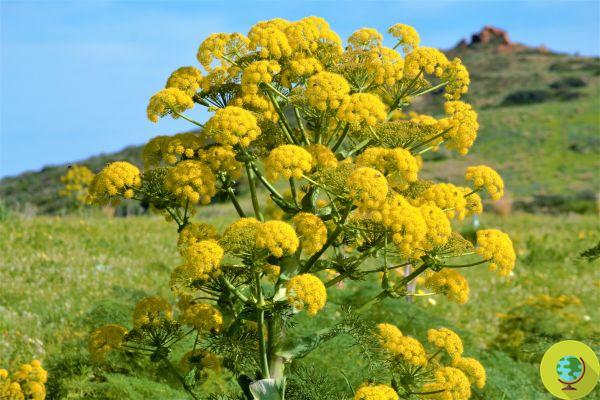Siflio is an ancient plant used in the past as a spice and medicinal remedy, now extinct due to human exploitation.
He is about to end up run over, his mother saves himIl sylph is a spontaneous plant now extinct, used in the past to flavor dishes in the kitchen but also as a panacea for all ills, thanks to the infinite properties attributed to it. Its enormous success led to its disappearance.
Index
What is siflio
The discovery of silphium dates back to 630 BC, when a group of settlers left Santorini, known at the time as Thera, to North Africa. There, in Cyrene, in present-day Libya, they found this ancient species, shortly thereafter first mentioned as Silphion. From that moment the spice, probably already known to local populations, became very popular with Greeks and Romans, who used it in cooking and as a medicinal plant.
In a short time, the siflio had a enorme successoe made the fortune of the inhabitants of Cyrene: the attempts to cultivate the plant outside its natural habitat failed miserably, so the spice was collected spontaneously by the locals and purchased by Greeks and Romans at very high prices.
But what appearance did you have this plant and what was it used for? Theophrastus, in his History of Plants, compares it to the giant fennel and a more precise idea is possible thanks to the ceramics and paintings in which it is depicted. The economic importance also made it a real symbol of the city, so much so that it came used on coins.
The depictions of the plant confirm the description of Theophrastus: the silphium in fact resembled the Ferula communis or nartex, plants belonging to the Apiaceae family, even if it had more prominent ribs at the level of the stem and alternating rather than opposite leaves.
According to experts, it could be one species very close to Ferula tingitana, the giant fennel of Tangier, still present in some areas of North Africa and the Middle East.

Tingitana splint – ©nastaszia/Shutterstock
Ownership and use
The siflio was employed as spice precious for flavoring meat and vegetable dishes but the root and the resin they were also used as a medicine for various ailments, mainly related to the digestive system.
Its administration was therefore recommended for improve digestion, relieve abdominal pain, improve liver function, fight constipation. Antipyretic, antiastenic, analgesic, sweat, diuretic and aphrodisiac properties were also attributed to the siflio. The plant was useful for cure infectionsie diseases of the kidneys, bladder, respiratory and osteoarticular systems and even the prolapse of the anus.
A real panacea, but not without side effects: the remedy was considered very powerful and the abuse could cause significant intestinal disturbances, headaches and dry bile. The siflio was also abortive and contraceptive, a common action also in other varieties of ferula. In any case, according to Pliny, it was a “precious gift of nature” and he explains that the best variety was the Afghan one, compared to the Persian and Syrian ones.
Disappearance
Although the methods and rules related to the collection were quite strict (Theophrastus explains that the collection was allowed only in some areas and in certain quantities), the plant disappeared after only 700 years from its discovery, making the siflio the first plant known to have become extinct due to excessive exploitation by man.
The extinction of the siflio seems to be linked to its incredible popularity and, although it is not known for sure how and why this plant disappeared, it is known that a hundred years later, the scarcity of the plant caused a collapse of the economy and that, after the first century, there were no more traces of this spice.
The loss of siflio should make us reflect on the way we interact with nature and on the use we make of herbs. In fact, it is no coincidence that herbal medicine and phytotherapy use different plants to treat similar ailments, just as it is no coincidence that many spontaneous plants are protected.
Although today many plants used in cooking and herbal medicine are successfully cultivated and seed banks exist to preserve the genome, the problem remains of protect and protect species to avoid that other precious plants have the same fate as the siflio.
For this reason, when taking specimens from the wild, experts recommend do not weed out the plants and not to harvest more than necessary and, always for the same reason, phytotherapy does not focus on a single remedy to cure a disorder, if this can be treated by more than one plant. The aim is to conserve biodiversity, so precious for the planet and for our survival.
Sources of reference: Marco Valussi / Il Giornale del Cibo / Cambridge University
Read also:
- Plants are dying out faster than animals
- Orto Antico Bio: a crowdfunding project to save rare plants and vegetables
- Hawaiian flower, believed to be extinct, rediscovered by a drone


























